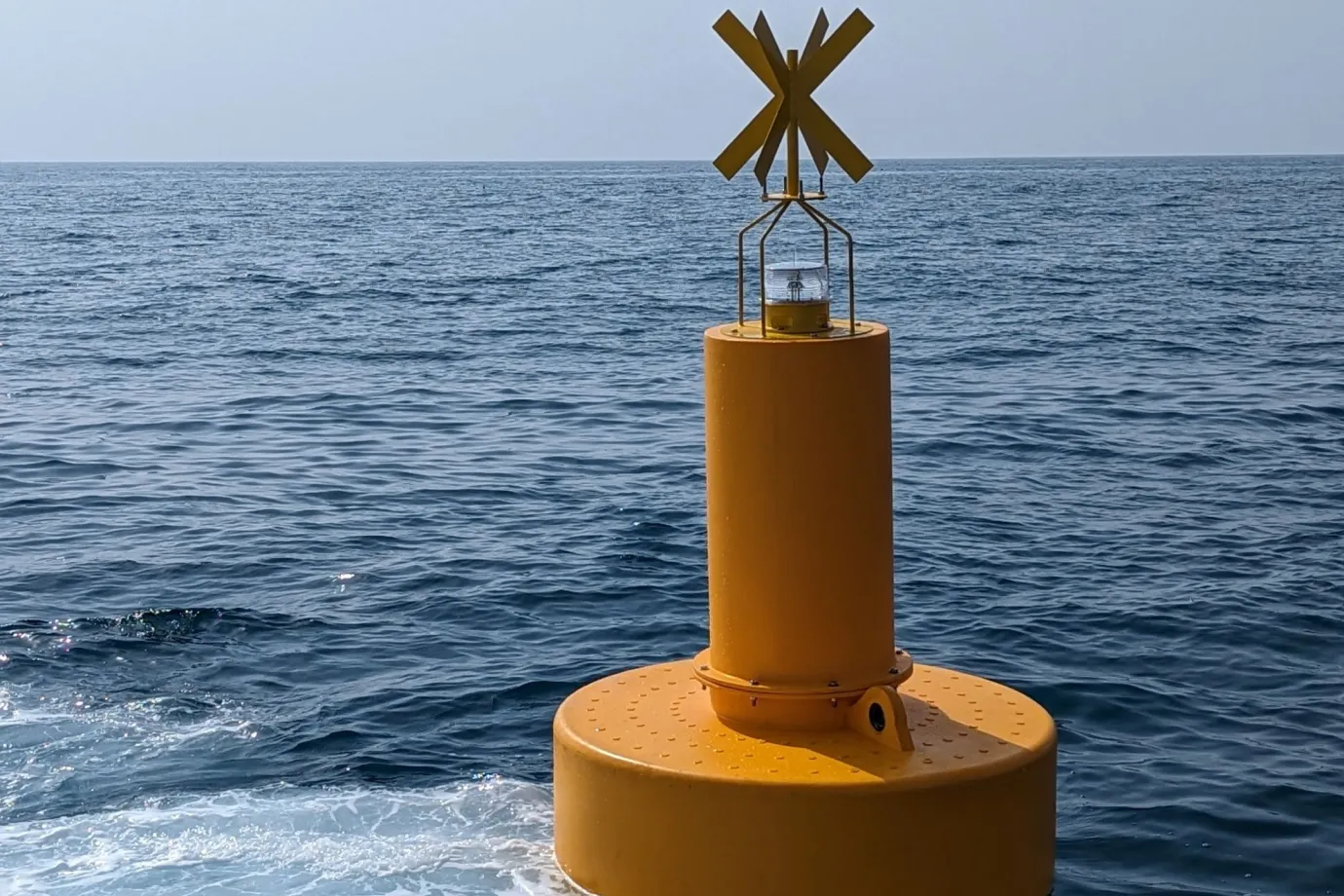Navigation is a thousand times more challenging during nighttime, fog, and harsh weather conditions, whether in open waters or nearshore. Reduced visibility impairs a navigator’s ability to accurately determine position, recognize navigational markers, and avoid obstacles, all of which can lead to dangerous or even life-threatening situations. This is where marine lanterns become indispensable, providing essential illumination that enhances visibility and ensures safer navigation. In this blog post, we delve into understanding marine lanterns and their role as a marine traffic solution.
Looking for a reliable navigation aid?
Explore our “Marine Lantern” options trusted by ports and coastlines worldwide.

What Is a Marine Lantern?
A marine lantern is a device designed to illuminate a specific area and ensure the navigator’s safety in nighttime, fog, harsh weather conditions, or any other situation in which visibility is disrupted or reduced. These lanterns are typically equipped with Light-Emitting Diodes (LED) and mounted on buoys to float on the water as aids to navigation in harbors, rivers, oceans, and marinas. Therefore, marine lanterns play a critical role in providing a safe environment for watercraft and navigators by marking underwater hazards, channels, rocks, reefs, and even swimming areas nearshore.
See also: “All About Navigation Buoys”
Different Types of Marine Lanterns

Marine navigation lanterns are provided in various types and categories based on their application, dimensions, buoyancy, durability, etc. However, marine buoy lanterns can be categorized due to their power supply source and technology used to light up the Light-Emitting Diodes (LED). Here are the most common types of marine lanterns and the features each offers in more detail:
Battery-Powered LED
Battery-powered lanterns are one of the most traditional types of marine lanterns, relying on batteries to power LED lights. These lanterns usually use high-capacity batteries to ensure long operational life and consistent illumination. However, their effectiveness is limited by battery life. Once the battery is depleted, the lantern will no longer function until either the battery or the marine lantern itself is replaced.
Self-Powered LED

Equipped with solar panels or wind turbines, these marine lanterns generate their own power from natural sources and store it in built-in batteries. They are designed to be completely eco-friendly and do not require oil, gas, or any other types of fuel to illuminate a specific marine area. In addition, self-powered marine lanterns can be more durable than battery-powered lanterns.
What Factors Should Be Considered While Choosing a Marine Lantern?

Regarding the critical role of marine lanterns in ensuring navigation safety and marking marine hazards, choosing the right lantern is vital. Most marine navigation lanterns are designed and customized based on the project’s conditions, but there are some factors that should be considered when choosing a marine lantern to ensure its performance and reliability, which the most primary ones are as follows:
IALA Standards
The International Association of Marine Aids to Navigation and Lighthouse Authorities (IALA) is an intergovernmental organization that established global standards for marine lanterns (including lighthouses and any other lanterns used as marine aids to navigation). A marine buoy lantern chosen to ensure navigators’ safety must include the IALA standards.
Weather Conditions
Marine navigation lanterns are typically used to mark the hazards and navigation route in special weather conditions, including nighttime, fog, heavy rains, strong storms, and any other harsh weather conditions that can disrupt or reduce navigators’ visibility. Accordingly, it is crucial to consider the buoyancy, durability, and resistance of marine lanterns to ensure their performance in these cases.
Water Conditions
Even the slightest displacement of marine lanterns can lead to hazardous conditions, and their stability must be ensured, which is not easy in high-tidal waters. Therefore, the marine buoy lanterns used in moderate to high tidal waters are typically customized to be anchored to the seabed, remaining stable in place. In calm or low-tidal waters, on the other hand, anchoring is not necessary.
Power Source Durability
In some cases, marine lanterns are used as aids to navigation for a short duration. So, the chosen marine navigation lantern can be battery-powered, which requires it to be replaced after a while. Otherwise, the marine lanterns used permanently should be self-powered and equipped with a built-in battery, ensuring their performance for a longer duration.
Luminous Range
Due to the significance of visibility in marine navigation, it is critical to choose a marine lantern equipped with a high-intensity LED and a long illumination range to ensure the light can be seen clearly over long distances, especially at night and in harsh weather conditions like fog.
How Far Can Marine Lanterns Be Seen?

The visibility range of marine lanterns varies based on their design, light intensity, and environmental conditions. Standard models offer visibility from 1 to 2 nautical miles, while more powerful units can reach up to 9 nautical miles. For specialized applications, lanterns provide ranges extending up to 24 nautical miles.
Factors influencing visibility include atmospheric conditions, the lantern’s elevation above sea level, and the observer’s height. Adherence to International Association of Marine Aids to Navigation and Lighthouse Authorities (IALA) standards ensures that lanterns are appropriately selected for their intended operational environments.
When choosing a marine lantern, it’s crucial to consider the specific requirements of the navigation area to ensure optimal performance and safety.
What Are the Common Challenges Faced with Marine Lanterns?
Marine lanterns face several operational challenges in harsh marine environments. Understanding these challenges and implementing appropriate solutions is crucial for their effectiveness and longevity.
Reduced Visibility in Adverse Weather Conditions
In conditions such as fog, heavy rain, or storms, marine lanterns’ visibility can be significantly diminished, posing risks to navigators. To mitigate this, high-intensity LED lanterns designed for low-visibility situations must be used to ensure they comply with International Association of Marine Aids to Navigation and Lighthouse Authorities (IALA) standards for luminous range.
Physical Damage from Harsh Marine Environments
Exposure to strong winds, waves, and floating debris can physically damage or dislodge marine lanterns, especially those mounted on buoys. Employing robust, marine-grade materials and secure mounting systems can enhance durability. Regular inspections, particularly after severe weather events, are crucial to identify and address any damage promptly.
Biofouling Accumulation
The accumulation of marine organisms like algae and barnacles on lantern surfaces can obstruct light emission and degrade performance over time. Applying antifoul coatings and scheduling routine cleaning can prevent biological build-up and ensure optimal light transmission.
Corrosion of Components
Saltwater exposure accelerates the corrosion of metal parts, leading to structural degradation of marine lanterns. Utilizing corrosion-resistant materials such as stainless steel or marine-grade aluminum, along with protective coatings, can significantly reduce corrosion risks.
Power Supply Failures
Battery degradation or inefficiencies in solar panels can lead to lantern outages. Regular maintenance checks on power systems, timely replacement of aging batteries, and ensuring solar panels are clean and functioning correctly are essential to maintaining continuous operation.
Electrical Connection Issues
Moisture ingress can corrode electrical connections, causing intermittent or complete failures. To prevent such issues, ensure all electrical components are properly sealed with waterproof enclosures and use marine-grade connectors.
Conclusion
Marine lanterns are one of the most vital devices used to mark marine hazards for navigators at night and in harsh weather conditions like fog and strong storms. Designed to float on the water, these lanterns can efficiently ensure navigation safety in marine environments. Understanding the concept of marine buoy lanterns, the different types they include, and the primary factors that should be considered while choosing one play a crucial role in enhancing their performance and reliability.
Under IALA standards, light characteristics are defined by three documents: R1001 covers which types of aids get which light pattern and color; R0201 (E‑200‑1) specifies exact color ranges; and R0110 defines flash rhythms such as flashing, isophase, occulting, long‑flashing, Morse code, and quick or very quick sequences.
An isolated danger mark uses a group‑flashing white light, specifically Fl(2) W: two quick white flashes followed by a longer period of darkness.
Sector lights project different colors depending on the observer’s bearing—white indicates safe passage, while red or green signal when the vessel is off‑center. The transitions between colors occur over an angular range of some degrees, not instantaneously.
GPS‑synchronized lanterns incorporate internal GPS receivers that align their flash patterns anywhere in the world without extra wiring or external components. This ensures consistent flashing across multiple units even over long distances.
ADOR’s marine lantern provides programmable flash patterns, GPS synchronization, and IR remote activation. It is self‑contained with solar power, offers up to 6 nautical miles of visibility, and comes with a 2‑year warranty in a marine‑grade IP68 enclosure.




